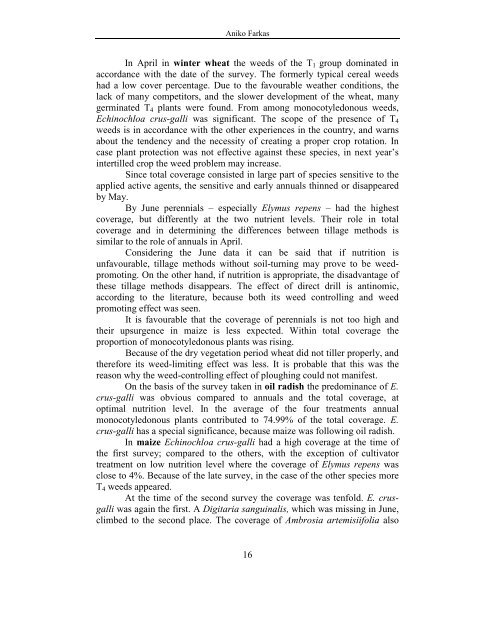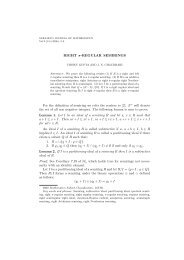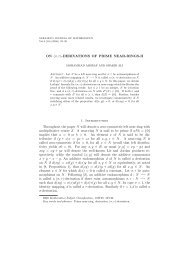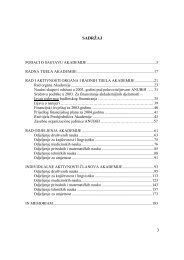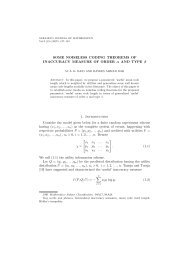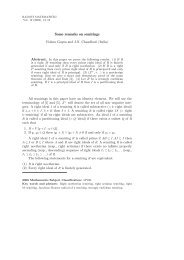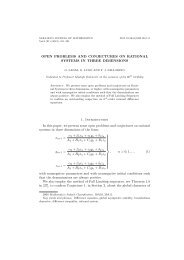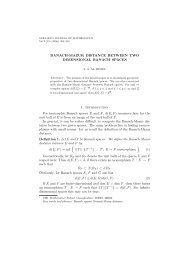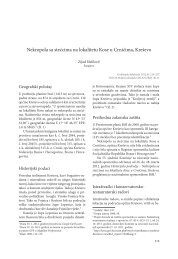HERBOLOGIA - anubih
HERBOLOGIA - anubih
HERBOLOGIA - anubih
You also want an ePaper? Increase the reach of your titles
YUMPU automatically turns print PDFs into web optimized ePapers that Google loves.
Aniko Farkas<br />
In April in winter wheat the weeds of the T 1 group dominated in<br />
accordance with the date of the survey. The formerly typical cereal weeds<br />
had a low cover percentage. Due to the favourable weather conditions, the<br />
lack of many competitors, and the slower development of the wheat, many<br />
germinated T 4 plants were found. From among monocotyledonous weeds,<br />
Echinochloa crus-galli was significant. The scope of the presence of T 4<br />
weeds is in accordance with the other experiences in the country, and warns<br />
about the tendency and the necessity of creating a proper crop rotation. In<br />
case plant protection was not effective against these species, in next year’s<br />
intertilled crop the weed problem may increase.<br />
Since total coverage consisted in large part of species sensitive to the<br />
applied active agents, the sensitive and early annuals thinned or disappeared<br />
by May.<br />
By June perennials – especially Elymus repens – had the highest<br />
coverage, but differently at the two nutrient levels. Their role in total<br />
coverage and in determining the differences between tillage methods is<br />
similar to the role of annuals in April.<br />
Considering the June data it can be said that if nutrition is<br />
unfavourable, tillage methods without soil-turning may prove to be weedpromoting.<br />
On the other hand, if nutrition is appropriate, the disadvantage of<br />
these tillage methods disappears. The effect of direct drill is antinomic,<br />
according to the literature, because both its weed controlling and weed<br />
promoting effect was seen.<br />
It is favourable that the coverage of perennials is not too high and<br />
their upsurgence in maize is less expected. Within total coverage the<br />
proportion of monocotyledonous plants was rising.<br />
Because of the dry vegetation period wheat did not tiller properly, and<br />
therefore its weed-limiting effect was less. It is probable that this was the<br />
reason why the weed-controlling effect of ploughing could not manifest.<br />
On the basis of the survey taken in oil radish the predominance of E.<br />
crus-galli was obvious compared to annuals and the total coverage, at<br />
optimal nutrition level. In the average of the four treatments annual<br />
monocotyledonous plants contributed to 74.99% of the total coverage. E.<br />
crus-galli has a special significance, because maize was following oil radish.<br />
In maize Echinochloa crus-galli had a high coverage at the time of<br />
the first survey; compared to the others, with the exception of cultivator<br />
treatment on low nutrition level where the coverage of Elymus repens was<br />
close to 4%. Because of the late survey, in the case of the other species more<br />
T 4 weeds appeared.<br />
At the time of the second survey the coverage was tenfold. E. crusgalli<br />
was again the first. A Digitaria sanguinalis, which was missing in June,<br />
climbed to the second place. The coverage of Ambrosia artemisiifolia also<br />
16


